They say don’t judge a book by its cover but watch out for enticing endpapers! I discovered the lure of endpapers as a kid leafing through my cousin’s Childcraft series. The orange-red covers stamped in black and grey weren’t too exciting, though upon opening the book, those endpapers made extravagant promises. Spot illustrations of Old Mother Hubbard, a steamboat, animals, Little Jack Horner, and more waited inside.
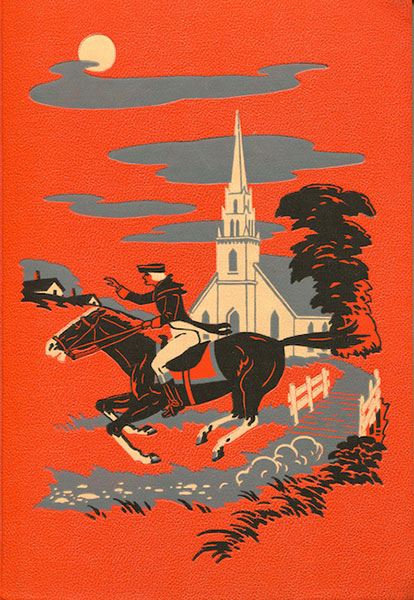
Childcraft was introduced in 1934 as part of the World Book encyclopedia, less A to Z and more kid-friendly with themed volumes of poetry, stories, fairy tales, biographies, and other topics. Mid-century artists included Virginia Lee Burton, the D’Aulaires, Milo Winter, and Leonard Weisgard. The art was colorful, familiar, and reassuring.
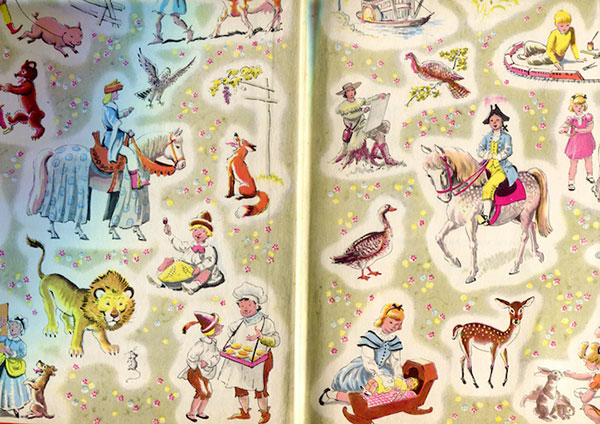
My cousin never cracked her Childcraft books while I desperately longed for them. It wasn’t a wish I confessed to my folks because I knew we couldn’t afford them. Is it any wonder I sought out children’s anthology series as an adult?
I stumbled on My Book House, fifteen volumes bound in shades of green and blue, in a used bookstore. Forty dollars was steep (I customarily spent a dollar in there), until I picked up Volume 6, Through the Fairy Halls and glimpsed the Art Deco endpapers. Be still, my heart. The grocery money was forked over and we ate peanut butter.
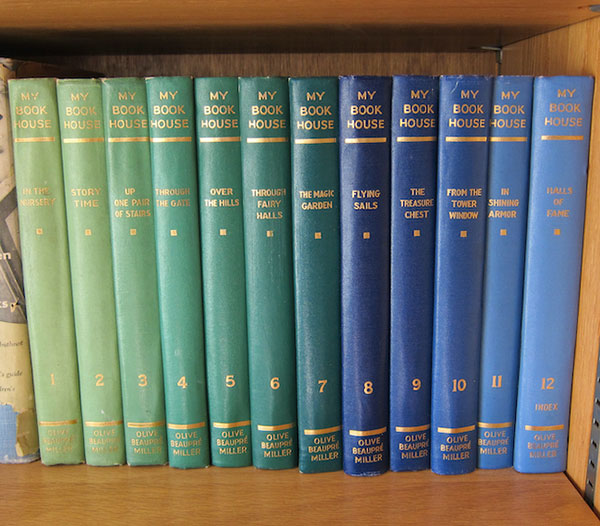
My Book House series were published by Olive Beaupre Miller, a venture begun when she collected stories to read to her daughter. The first volumes were issued in 1920. The books were sold door to door by saleswomen. I admired Miller’s can-do attitude to start a post-war business in the dicey field of children’s anthologies and to employ women.
If ever we must evacuate, I’ll grab my older My Book House in a special house-shaped bookcase. Only 100 of these were made, the original 1920 six volumes and three additional “travel” volumes. My husband and I were browsing through an antique shop one day when I spied the Book House in a dim back room and nearly fainted. My husband bought it for me. He had little choice: I was planning to camp out beside it.
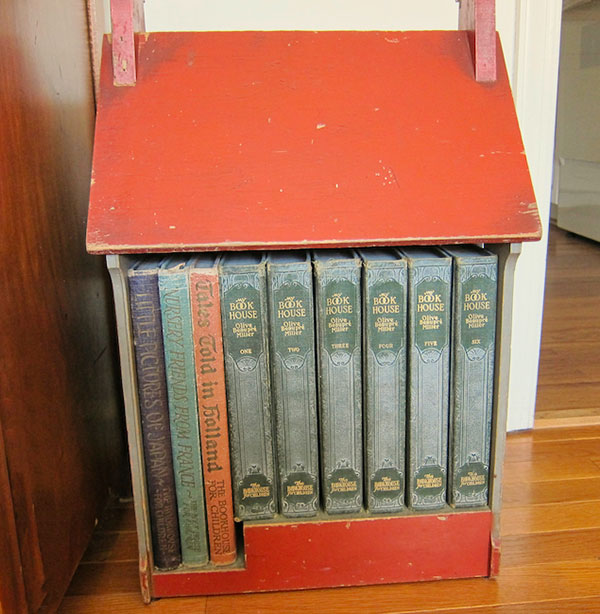
Entering antique stores, I listened for the whisper of endpapers. Once I followed murmuring sounds and unearthed five volumes of The Children’s Hour. Published in 1953 by Marjorie Barrows, Longfellow’s “The Children’s Hour” poem follows the introduction. All sixteen volumes are meaty, nearly 400 pages, totaling more than 6000 pages of text and two-color art. Full-color endpapers in each volume reflect the story characters within. Upon opening the cover, their voices call out cheerfully.
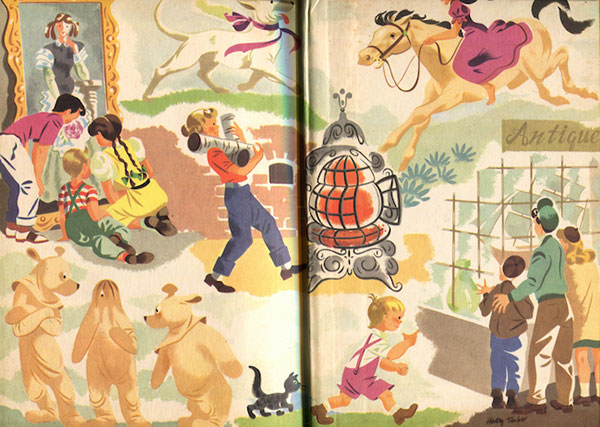
A post in my favorite blog, “Myth and Moor,” led to a recent purchase of a set of Book Trails. The blog’s author, Terri Windling, whose tumultuous childhood (similar to mine) was marked by Disneyfied Little Golden Book adaptations of Kipling, Felix Salton, and Barrie, books she hates today yet as a child adored “Imitation Peter and Imitation Thumper and Imitation Baloo.” She also read stories in her mother’s anthology series, Book Trails, mostly featuring children from privileged Edwardian backgrounds, a far cry from Windling’s gritty life.
Her essay reminded me of the encyclopedias stored in our basement when I was growing up. Only one volume, Every Child’s Story Book, was devoted to children. I wrestled this massive book with its tiny print and stingy leading, squinting my way through uninspired versions of fairy tales. There were no endpapers. Windling gleaned what she needed from the Book Trails stories until she found the true tales. I did the same. However, is it fair to fault the books we cherished as a child even if they seem inferior now? What we took into our childish hearts shouldn’t be judged by adult standards. We loved what we loved.
When my new-to-me set of Book Trails arrived, I opened the cover of the first volume and sighed. The double-spread showed a trail of animals and people, a castle, pirate ship, wagon train, an aeroplane (the art was rendered in 1920), houses and huts, all winding from the bottom right corner to the top left corner and beyond. My imagination willingly followed. Bliss.
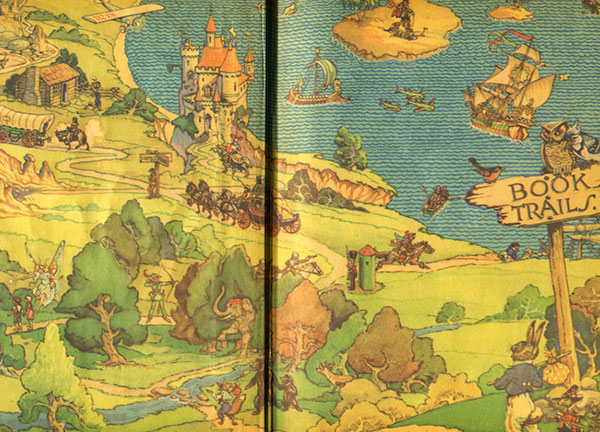

Thank you for your article about endpapers. I love them! I especially love endpapers that provide a glimpse of the characters or plot. Some even begin a story before the story formally begins. Others extend the story at the end. It’s important not to forget endpapers.
I absolutely agree! I remember reading favorite library books and hungrily studying the endpapers for more…foreshadowing as you mentioned, and more of the actual story. I peeked under pasted-down dust covers and tried to look under glued on library card pockets. Thanks for reading!
They invite us in, then bid us fond farewell! Endpapers are wonderful hosts!
So well put! Also, I’m a huge fan. Loved Moonpenny Island!
Oh my goodness – thank you, Candice!